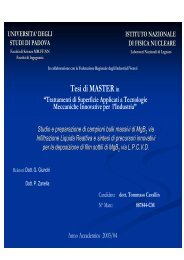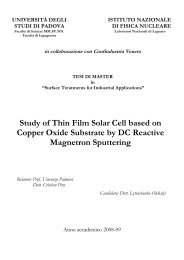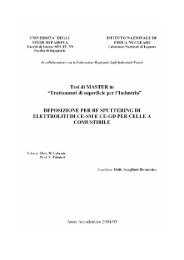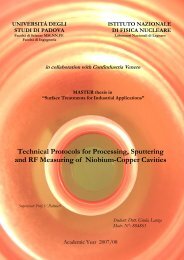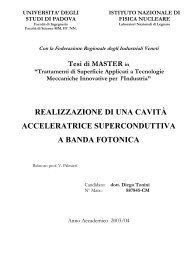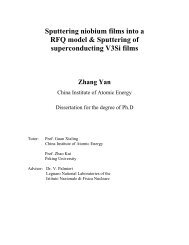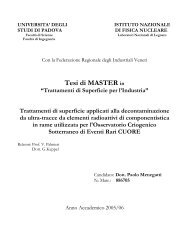Magnetron sputtering of Superconducting Multilayer Nb3Sn Thin Film
Magnetron sputtering of Superconducting Multilayer Nb3Sn Thin Film
Magnetron sputtering of Superconducting Multilayer Nb3Sn Thin Film
You also want an ePaper? Increase the reach of your titles
YUMPU automatically turns print PDFs into web optimized ePapers that Google loves.
Fig. 2.26 The interface <strong>of</strong> the surface pr<strong>of</strong>ile measurementAccording to the results, the deposition rate is proportion to the <strong>sputtering</strong>current and the proceeding gas pressure, which means that the deposition timedetermines the thickness <strong>of</strong> the thin film and the <strong>sputtering</strong> current determines thedeposition rate,2.2.3.2 Tc measurementIn order to measurement the critical temperature (T c ), we should use the liquidHelium, because only the liquation point <strong>of</strong> He (4.2K) is lower than the T c <strong>of</strong> Nb.We use the four point resistance measurement method to measure the T [30] c . Thefour contacting point are arranged as the last one in Fig. 2.29 by a spring as shown inFig.2.30. The input current is fixed at 10 uA and changed its direction in period <strong>of</strong> 1second. In the T c measurement instrument, the sample is place on a piece <strong>of</strong> paperpainted with grease for the good thermal conductor, and the sample should beprevented to contact with copper directly.Because the measurement error and the phase change process, the temperature <strong>of</strong>changing from the normal conductor to superconductor is not a point value. In orderto minimizing the error, we calculate the T c and dT c as follow:TC90%+ TC10%TC= (2.1)2TC90%− TC10%dTC= (2.2)231



